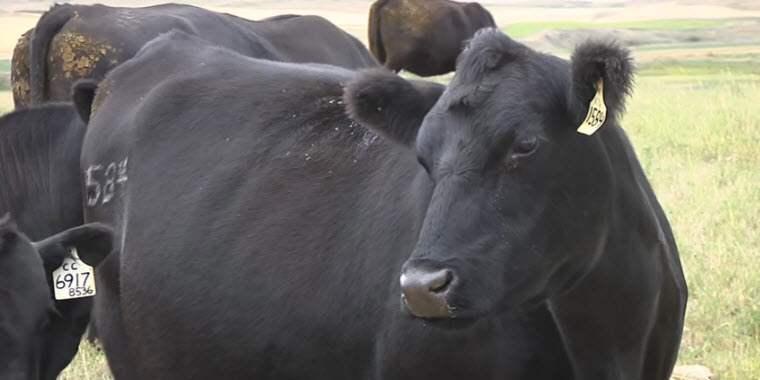Harvest is well underway which means the breeding season should be wrapping up soon for spring calving herds. If you have thought to yourself recently “When did we turn out the bulls?”, you might work on a very busy operation. The start and end of the breeding season needs to be put on the calendar just like other special events. By planning when to pull bulls, other tasks such as weaning and pregnancy checks can be planned.
Determine Breeding Season Length
The length of the breeding season is directly correlated to the length of the calving season. However, it seems that everyone is always ready for calving to be done, but never ready to pull the bulls. With proper herd management, nutrition and body condition, cows should be cycling within a month after calving. Therefore, when bulls are turned out to pasture, a majority of cows should be capable of conceiving at first service. According to CHAPS data (NDSU), 60{c78344d3e29215303d5d40d52b11c16d78bfae3d066d03ae10a9b147abb03b47} of cows should conceive during the first 21 days of the breeding season. So, the remaining 40{c78344d3e29215303d5d40d52b11c16d78bfae3d066d03ae10a9b147abb03b47} should be able to conceive during the next 21 days, right? Outside factors such as bull servicing ability and environment (heat, flies, pasture quality), can make meeting this benchmark difficult. One option that is often the best of both worlds, is to strive for a 60-day breeding season that should yield optimal pregnancy rates, while still resulting in a condensed calving season and uniform calf crop.
Pregnancy Detection
With the evolution of technology, there are several methods of pregnancy detection available for producers to choose. Rectal palpation has been utilized for decades, and still remains as a viable way for an experienced person to physically palpate the fetus and determine the gestation length (age of the fetus). This method is quick, requires no extra equipment and is a low cost option for producers. Palpation can be done starting at day 45 up to the last trimester. Another option available is transrectal ultrasonography. With this method, an ultrasound machine connected to a probe inserted in the rectum, either by hand or with a hands-free probe extender, allowing the fetus to be examined visually. Advantages of ultrasound include earlier determination of pregnancy (as early as 30 days), more accurate fetal age determination, sexing, presence of multiple fetuses, as well as visual inspection of other structures of the reproductive tract. Lastly, blood tests can detect pregnancy by measuring the amount of pregnancy-associated glycoproteins (PAGs) secreted by the placenta. Blood sample taken as early as day 28 and can be evaluated for these PAGs. The advantages of blood tests are they can be done early, and do not require skilled technicians. However, some disadvantages are that results are not immediate and cattle cannot be sorted immediately. Lastly, if the pregnancy is lost, PAGs will remain in the blood for an extended period of time, so false positives are possible and companies recommend re-checking the pregnancy again later in the season.
Open vs. Bred Cow Price
Bred cows are worth more than open cows, so why should the bulls be pulled? Leaving the bulls in year round can be a much less efficient program to manage. For example, preg-checking cows before removing bulls from the pasture can be difficult for the technician, since fetuses of all ages will be present. In addition, cows that may appear “open”, could be less than 30 days bred, and will have to be re-checked at a later date to be certain of her pregnancy status. At the same time, the fetuses in cows bred early in the season may be difficult to age since calves will be large and out of arms reach. If you forget to pull the bull or if a longer breeding season is required to increase pregnancy rates, for financial and management reasons, cows should be managed and sorted based on pregnancy distribution. Preg-checking cows and keeping all early bred cows can be one way accomplish this. Anything bred later than desired (after 45 or 60 days) could then be marketed to herds that calve later than yours do. Cows that come up open can be marketed either right after pregnancy check to eliminate further feed costs or feed a high energy ration to increase weight and condition before sale at a later date.
To-Do List
Take some time to calculate how long bulls have been out to pasture, and determine when they need to be pulled based on your marketing, weaning and cow herd goals. Determine the desired calving season length and dedicate yourself to selling later bred cows. Lengthening the breeding season doesn’t mean greater revenue, and can often be the exact opposite. By properly managing the breeding season and pregnancy checking cows, bred cows can be managed more efficiently throughout the winter months.
###
Taylor Grussing- SDSU Cow/Calf Field Specialist
iGrow: A service of SDSU Extension


